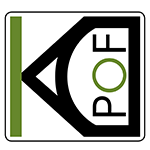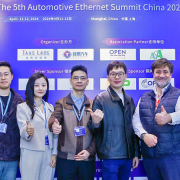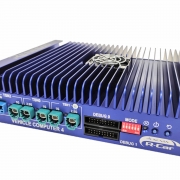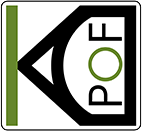10 Gb/s Connectivity Demo at Automotive Ethernet Congress
We’re grateful about the huge attention at the recent Automotive Ethernet Congress for our brand-new automotive optical multi-gigabit demo. In numerous meetings, our team displayed our first implementation compliant to IEEE Std 802.3cz. The demo setup operates in multimode multi-gigabit with 2 plates of multimode fiber 10GBASE-AU. In addition, we’re proud to show our optical multi-gigabit automotive Ethernet demo at the OPEN Alliance Inc. stand.
“We’re excited about the great interest from the automotive industry on the new optical multi gigabit communication technology from KDPOF,” stated Óscar Ciordia, Sales and Marketing Director. “The positive response once again confirmed this is the path forward!”
WEKA Fachmedien, the organizers of the AEC 2024, summarized the event as being characterized by success stories and high expectations for the future, but also by many unanswered questions and a great need for more cooperation and mutual support. The attendance was correspondingly high: with over 1,200 participants, speakers, and exhibitors over the three days of the event, there was a new visitor record for the tenth anniversary. For more event details, please read on in the report by WEKA.
Future-proof: Robust, Low Power, Scalable
The IEEE 802.3cz-2023 (nGBASE-AU) standard has been designed from scratch with the goal of meeting stringent automotive requirements. The use of glass optical fiber improves power consumption. In addition, it is more resilient to aging problems. It is absolutely future-proof since ECUs can be upgraded to higher speeds while keeping the same harness.
“As of today, the IEEE 802.3cz standard technology provides the only existing solution for 25 Gb/s and 50 Gb/s single lane connections with 4 inline connectors and a maximum length of 40 meters in the car over OM3 multimode fiber,” added Luis Manuel Torres, Principal System Architect at KDPOF and active member at IEEE Standards Association.
The standard specifies speeds of 2.5, 5, 10, 25, and 50 Gb/s per lane. It meets automotive temperature requirements of -40 °C to +105 °C and OEM reliability requirements with a minimum of 15 years of operation with 10 FIT. The maximum link length is 40 meters with 4 inline connectors. The solution is affordable since the higher optical power budget allows lower tolerance connectors. Additionally, the OM3 fiber is widely used, ensuring high volume production.
An almost ideal communication channel allows a much simpler physical layer with a lower DSP/equalization complexity and no echo cancellation, resulting in lower power consumption, lower latency, a smaller silicon area, and overall lower-cost solution. A specially dedicated Operations, Administration, and Maintenance (OAM) side channel is available for dependability and link management.



 KDPOF
KDPOF TAAS LABS
TAAS LABS Renesas
Renesas



